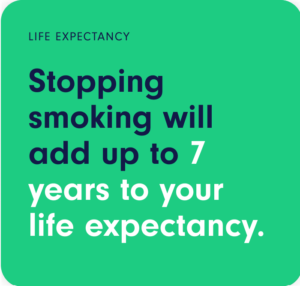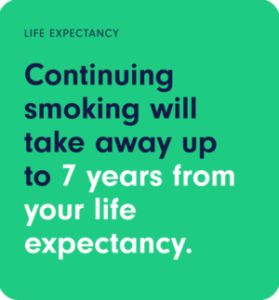What message would be more effective in getting people to quit smoking—one highlighting the extra dollars in their wallet saved, or the additional years in life expectancy gained? And is it better to focus on what smokers stand to gain if they quit, or what they stand to lose if they don’t? Turns out money savings reduces smoking more than a longer life.
Smoking is a huge problem. It is one of the leading causes of preventable death globally, yet it remains a common behavior—there are 30.8 million adult smokers in the US alone. Why do people do it, despite all the known downsides and health risks? Well, it is a manifestation of a key psychological mechanism that affects all of us and is called present bias. Present bias is our tendency to prioritize our short-term satisfaction (the pleasure of a cigarette) over our long-term wellbeing improved health and longevity). Sure, I want to live a long, healthy life, but that cigarette… it just tastes too good. So this tendency is a key reason why smoking is still so common.
How can we help people overcome present bias on their way to quitting smoking? One direction that psychology would point us to is making the consequences of smoking more concrete. Since we have this aforementioned present bias, the long-term benefits of smoking seem to us fluffy and abstract, and we give them less weight than the immediate reward we get from a cigarette. Research tells us, that if we can get people to see these long-term benefits in more concrete terms, we might help them prioritize these benefits and make better decisions. But what we don’t know is – what aspects of the long-term consequences of smoking should we focus on? And how should we go about the messaging? This research, recently published in Journal of Behavioral Decision Making set out to explore this, and specifically it focused on two kinds of frames: whether to focus on financial or health consequences (money vs. time) and whether to focus on what smokers stand to win if they quit, or what they stand to lose if they don’t (gain vs. loss).
Time or money?
Time and money have a lot in common. They are both resources we consume, and they are both scarce – we typically want more of them than we have (who would refuse a salary raise, or an extra hour of sleep in the morning?). But there are some key differences. In relation to the tendency to discount future benefits—present bias—that we discussed earlier, that seems to be stronger for time than for money. This is because people typically expect to have more spare time in the distant future, but not necessarily more spare money. This has clear implications for smoking, because if people believe they will have more time in the future then they do right now, they will delay unpleasant tasks, such as quitting smoking, to the future.
Gain or loss?
One of the most classic and well-known theories in psychology states that losses loom larger than gains, or in other words: people hate losing and will do anything to avoid it. That might lead us to believe that messages that focus on what people stand to lose might be more effective to promote health behaviors. But prior research that specifically looked into gain and loss framing in health behavior messages actually found that gain-framed messages were more effective in encouraging health-prevention behaviors, like smoking cessation and physical activity.
Testing these ideas with smokers
I decided to test these theories in the real-world, and to do this, I collaborated with Alex Therapeutics , a healthcare start-up whose app has helped thousands of people quit smoking so far. We designed an experiment, were we sent different messages to close to 3,000 app users, about what is likely to happen if they follow through with the quit-smoking plan the app gives them, or what will happen if they don’t. Some app users saw these consequences in terms of the money they might save, and others saw them in terms of the years of life expectancy they might gain.




What did we see? Well, the most effective message was the one that was stating the benefits (gains) of quitting smoking in dollar terms (money). This message caused people who saw it to smoke around 20% fewer cigarettes than the messages talking in terms of loss, or time. This is great, because it gives us an indication of what works, and it also gives real-world support to previous theories about money vs. time and gain vs. loss. What we didn’t see though, is any effect on motivation, or on long-term success in quitting. But this was unfortunately expected because most short-term behavior changes don’t lead to long-term change.
This study gives us a clue as to what message would work better to curb smoking: ideally, it should involve money, and be frames as a gain. Given that the results were collected in a field setting, in conditions that reflect real-life decisions of smokers, they should be of interest to product designers, public health organizations, and policymakers who design quit-smoking campaigns. But there is still a lot we more to learn, including which one of these frames (or others?) can be the key long-term success in quitting smoking.